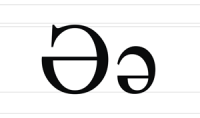
Q: What about kids who add a schwa to the end or middle of words? Do you have any ideas for that? I see the addition of a schwa as the child’s way of making a simpler speech motor pattern. According to researchers, the CV is the simplest motor pattern and kids change a CVC to a CV-CV to make it easier. All kids do this — e.g., “mom” changes to “mama” and “dad” changes to “dada”. They also do this with the diminutive —…



